Power Pitch
Stroke & Blood Vessels: Novel Techniques & Applications
ISMRM & ISMRT Annual Meeting & Exhibition • 10-15 May 2025 • Honolulu, Hawai'i

| 08:15 |
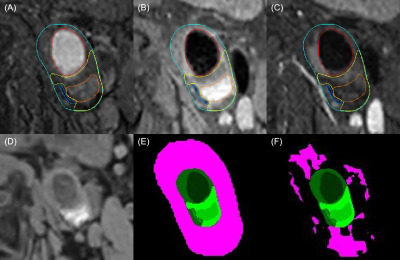 |
Screen Number: 26
1209. Quantitative
characteristics of carotid perivascular adipose tissue measured
by MR imaging: Potential indicators for ischemic stroke risk

S. Yu, R. Huo, X. Chen, X. Lin, X. Song, H. Qiao, Z.
Ning, D. Meng, N. Xu, Z. Lin, Y. Liu, X. Zhao
Tsinghua University, Beijing, China
Impact: Our study demonstrated that the amount of PVAT
in carotid artery with vulnerable plaques is independently
associated with cerebral infarction, suggesting that greater
PVAT amount may indicate higher risk of ischemic stroke.
|
| 08:15 |
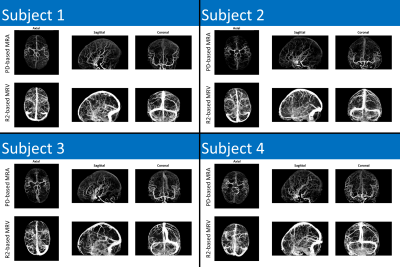 |
Screen Number: 27
1210. Simultaneous
Gadolinium-free MR Angiography, Venography and Relaxometry using
a fast 3D MR-STAT protocol
M. Schilder, S. Mandija, H. Liu, E. Versteeg, M. Fuderer, O.
van der Heide, M. Haacke, T. Meerbothe, T. Snijders, P.
Robe, C. van den Berg, A. Sbrizzi
University Medical Center Utrecht, Utrecht, Netherlands
Impact: In addition to fast, high-resolution
multiparametric mapping, MR-STAT offers gadolinium-free MRA
and MRV without the need of additional scan time, reducing
the burden of contrast injections and dispensing with
environmentally harmful and expensive gadolinium-based
contrast agents.
|
| 08:15 |
 |
Screen Number: 28
1211. SNAPFLOW:
A Novel Integrated MRI Sequence for Simultaneous Cerebral MRA
and Blood Flow Assessment
Z. Han, Z. Li, P. Wu, X. Liu, Z. Chen, X. Zhao
Tsinghua University, Beijing, China
Impact: The novel sequence SNAPFLOW enables simultaneous
acquisition of MRA and blood flow data within a single scan,
offering an efficient and comprehensive cerebrovascular
assessment. In addition, this proposed sequence has
potential in evaluating intraplaque hemorrhage.
|
| 08:15 |
 |
Screen Number: 29
1212. Highly
Accelerated 3D TOF MRA using Deep Learning Reconstruction with
Raw K-space Simulation
H. Li, M. Chiew, I. Dragonu, P. Jezzard, T. Okell
University of Oxford, Oxford, United Kingdom
Impact: The proposed method shows promise for highly
accelerating 3D-TOF-MRA due to its superior performance.
Overcoming data scarcity, this approach holds the potential
for advancing research and clinical applications of
high-resolution whole-head 3D-TOF-MRA imaging, enhancing
cerebrovascular diagnostics.
|
| 08:15 |
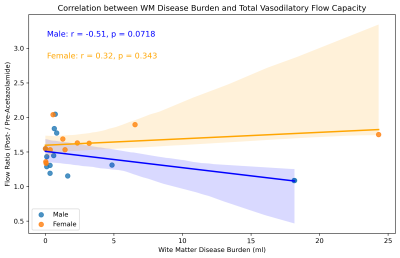 |
Screen Number: 30
1213. Sex-Based
Differences in Vasodilatory Flow Capacity Measured with 4D Flow
MRI and White Matter Disease Burden Among PWH: A Preliminary
Study
N. Konovalova, B. Fong, E. Kao, J. Schollenberger, M.
Wilson, J. Liu, S. Wang, Y. Yu, F. Chow, J. Narvid, D.
Saloner
University of California, San Francisco, San Francisco, United States
Impact: Our findings underscore the need for
sex-specific studies in cerebrovascular health for PWH,
potentially guiding targeted interventions for neurovascular
and cognitive health. Further research in larger cohorts
could validate these preliminary observations and clarify
their clinical implications.
|
| 08:15 |
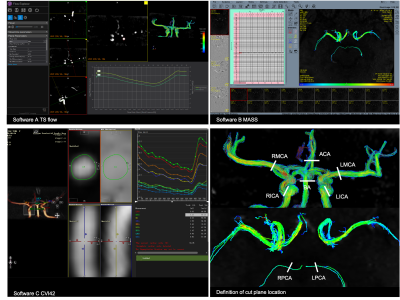 |
Screen Number: 31
1214. A
multi-software and multi-vendor cross-comparison study of
intracranial 4D flow MRI data analysis
Y. Wang, M. Luo, R. Li, B. Sui, J. Tang
Sichuan Provincial People's Hospital, Chengdu, China
Impact: It reveals that flow measurements of
intracranial arteries from different scanners showed better
agreement than that processed by different software. This
may set a reference to compare results by different
pipelines and guide the multi-center study design of 4D
flow.
|
| 08:15 |
 |
Screen Number: 32
1215. Fully
Automated Segmentation and Hemodynamic Quantification of Carotid
Artery 4D Flow MRI
E. Johnson, H. Berhane, J. Andrae, C. Strecker, H. Mast, H.
Urbach, M. Markl, A. Harloff
Northwestern University, Chicago, United States
Impact: This study demonstrated a method for
automatically generating segmentations of the carotid
vessels in 4D flow MR images and quantifying hemodynamics.
It can inform efforts to reproducibly study carotid
hemodynamics in large cohorts of subjects.
|
| 08:15 |
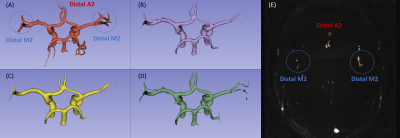 |
Screen Number: 33
1216. Evaluating
Segmentation Techniques for Circle of Willis in 4D Flow MRI: A
Comparative Study
J. Zhang, A. Verschuur, E. Schrauben, M. Bakker, P. Ooij, K.
M. Nam, I. Schaaf, C. Tax
University Medical Center Utrecht, Utrecht, Netherlands
Impact: Accurate automatic intracranial vessel
segmentation methods decrease the need for manual
intervention and facilitate the measurement of flow in
smaller arteries.
|
| 08:15 |
 |
Screen Number: 34
1217. Associations
of lenticulostriate artery geometry and hemodynamics with age,
vascular risks, and cognitive decline: A high-resolution 7T
study.

J. Tang, T. Tanji, M. Anukwu, T. Zhao, E. Joe, H. Chui,
L. Yan
Northwestern University, Chicago, United States
Impact:
7T high-resolution MRI including dual-VENC PC-MRI and 3D TOF provide comprehensive assessment of LSA geometry and flow dynamics, offering a class of sensitive imaging biomarkers for small vessel disease and cognitive impairment, and providing valuable insights into SVD pathology. |
| 08:15 |
 |
Screen Number: 35
1218. Utilizing
Blood Clots as Intrinsic Contrast Agents in Postmortem Vascular
MRI at 7T
C. Li, H. Pang, Z. Sun, M. Zhang, L. Jiang, A. Li, D.
Leitner, T. Wisniewski, A. Faustin, O. Devinsky, M. Bruno,
Y. Wadghiri, J. Zhang, Y. Ge
New York University Grossman School of Medicine, New York, United States
Impact: The imaging characteristics of postmortem blood
clots on T2*-W MRI enable detailed mapping of brain small
vessel architecture, with contrast similar to in vivo
Ferumoxytol-enhanced imaging, offering a novel method to
study postmortem vasculature and imaging correlates to
vascular pathology.
|
| 08:15 |
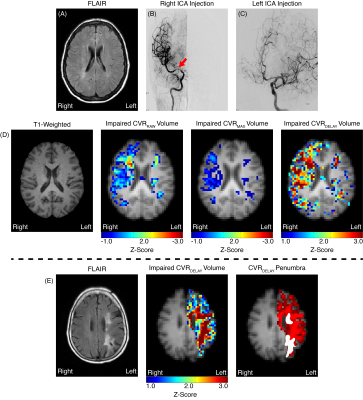 |
Screen Number: 36
1219. The
reactivity penumbra as a novel metric of ischemic symptomatology
in patients with intracranial cerebrovascular disease

C. Han, W. Richerson, M. Garza, M. Leguizamon, M.
Mishra, L. Davis, M. Fusco, R. Chitale, L. Jordan, M.
Donahue
Vanderbilt University Medical Center, Nashville, United States
Impact: Cerebrovascular reactivity (CVR) metrics,
assessed from fixed-inspired hypercapnic stimuli, differ in
brain hemispheres with versus without recent ischemic
symptoms; furthermore, the volume of CVR impairment,
relative to asymptomatic hemispheres, and the CVR
measurements themselves are related to recent ischemic
symptomatology.
|
| 08:15 |
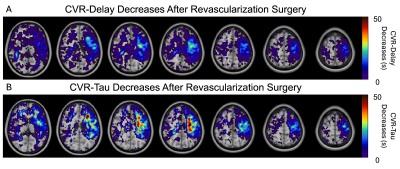 |
Screen Number: 37
1220. Cerebrovascular
Reactivity Response Times Following Revascularization Surgery in
Patients with Moyamoya
W. Richerson, A. Bhogal, C. Han, M. Garza, A. Song, M.
Fusco, R. Chitale, L. Jordan, M. Donahue
Vanderbilt University Medical Center, Nashville, United States
Impact: Cerebrovascular reactivity (CVR) response times
in both time-shifted and exponential models were
significantly decreased in response to revascularization
surgery in moyamoya patients, motivating the utilization of
CVR response times as a biomarker to evaluate treatment in
moyamoya disease.
|
| 08:15 |
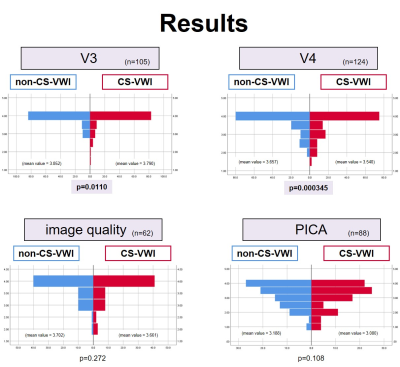 |
Screen Number: 38
1221. Comparison
of CNR in vessel wall imaging using compressed sensing in
vertebral arteries
T. Hiraka, Y. Sugai, T. Ogasawara, K. Haga, M. Kanoto
Yamagata University Faculty of Medicine, Yamagata, Japan
Impact: CS may lead to a deterioration in the visibility
of vertebral arteries for VWI in the posterior fossa.
Although CS has potential benefits, careful adjustment of
imaging parameters is necessary to mitigate the negative
effects, especially when evaluating vertebral arteries.
|
| 08:15 |
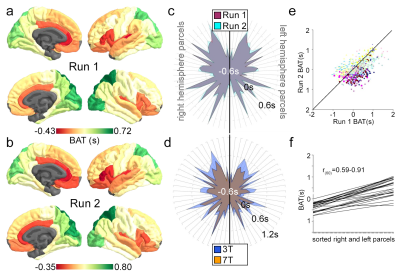 |
Screen Number: 39
1222. Reliable
and repeatable derived cerebrovascular metrics using 2Hz DSC MRI
at 3T and 7T
D. Schwartz, E. Baker, B. Moloney, X. Li, O. Huerta, F.
Lesage, A. Linninger, W. Rooney
Oregon Health & Science University, Portland, United States
Impact: This high temporal and spatial resolution method
is easily accessible and precludes the necessity of using
commonly derived "relative" metrics; absolute metrics make
effortless the translation and comparison of derived
cerebrovascular qualities across diseases, studies,
individuals, and the brain.
|
| 08:15 |
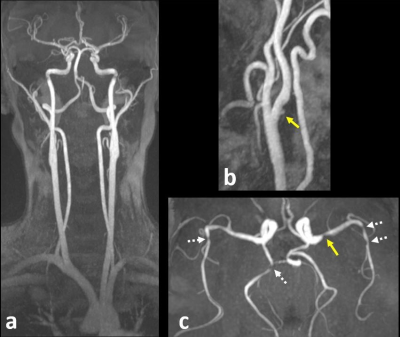 |
Screen Number: 40
1223. Combined
Luminal and Hemodynamic Nonenhanced Neck MR Angiography Using an
Efficient Tilted Multiple Thin-Overlapping-Slab Strategy
I. Koktzoglou, O. Ozturk, Z. Bulwa, F. Gil, W. Ares, E.
Azizi, N. Leloudas, R. Edelman
Endeavor Health, Evanston, United States
Impact: The provision of high-quality luminal and
hemodynamic data in a single and efficient nonenhanced MRA
protocol may help to reduce costs, enhance our ability to
evaluate the hemodynamic impact of cervical arterial
disease, and inform clinical decision-making.
|
| 08:15 |
 |
Screen Number: 41
1224. Whole-cerebrum
three-dimensional pseudo-continuous arterial spin labeling at
5T: reproducibility and preliminary application in moyamoya
Z. Li, X. Fan, G. Han, H. You, J. Ni, M. Li, F. Feng
Department of Radiology, Peking Union Medical College Hospital, Chinese Academy of Medical Sciences , Beijing, China
Impact: Whole-Cerebrum PCASL imaging at 5T ultra-high
field offers a promising tool in the assessment of
hemodynamic conditions in cerebrovascular diseases.
|
| 08:15 |
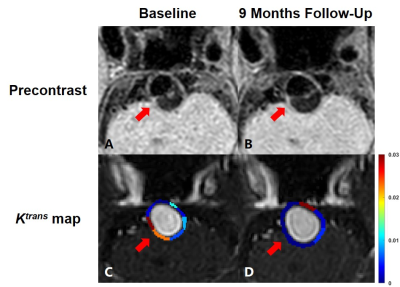 |
Screen Number: 42
1225. Aneurysm
Wall Permeability Measured by DCE-MRI as a Predictor of Growth
in Non-Saccular Intracranial Aneurysms at Follow-up

Y. Li, Z. Xu, L. Dong, Y. Wang, P. Liu, M. Lv, H. Chen
Center for Biomedical Imaging Research, Tsinghua University , Beijing, China
Impact:
This study demonstrates that baseline Ktrans, derived from DCE-MRI, is an effective predictor of non-saccular intracranial aneurysm growth. It offers a valuable tool for predicting aneurysm growth and enhancing rupture risk prediction in clinical practice. |
| 08:15 |
 |
Screen Number: 43
1226. Artificial
Intelligence to Eliminate the Need for Gadolinium-Based Contrast
Agents in Brain Perfusion Weighted Imaging
A. Cao, Y. Zhang, Y. Kang, J. Guo
Shenzhen University, Shenzhen, China
Impact: AI-generated hemodynamic parameters from
non-contrast imaging offer significant clinical benefits,
including reduced costs, faster acquisition, and improved
patient safety. This approach could streamline stroke
diagnosis and improve healthcare accessibility.
|
| 08:15 |
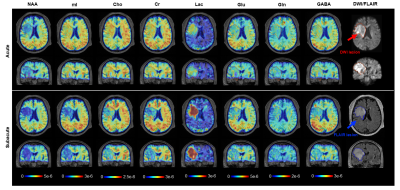 |
Screen Number: 44
1227. Assessment
of Longitudinal Neurometabolic and Neurotransmitter Changes in
Ischemic Stroke with Ultrafast J-Resolved MRSI
T. Wang, B. Bo, Z. Meng, C. Xu, Y. Zhao, Y. Li, W. Jin, J.
Wang, Z. Chen, Z-P Liang, Y. Li
Renji Hospital, Shanghai Jiao Tong University of Medicine, shanghai, China
Impact: Ultrafast J-resolved MRSI enables
high-resolution mapping of metabolites and neurotransmitters
within 11 minutes, offering valuable insights into tissue
viability in ischemic stroke patients during longitudinal
assessments.
|
| 08:15 |
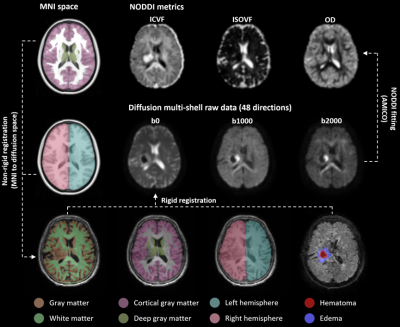 |
Screen Number: 45
1228. Microstructural
Brain Changes and Their Impact on Motor and Cognitive Functions
After Hemorrhagic Stroke: A NODDI-Based Study
H. Li, S. Wang, Y. Zhang, X. Wang, X. Zhao, L. Chen, M.
Yuan, Z. Chen, H. Wang, Y. Ju, S. Sun
Fudan University, Shanghai, China
Impact: Early stage of ICH may result in the disruption
of microstructural integrity within brain tissue.
|
| 08:15 |
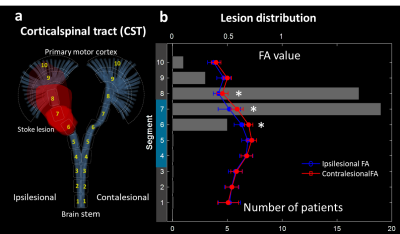 |
Screen Number: 46
1229. Prediction
of Long-term Motor Function Based on integrity of corticospinal
tract in Ischemic Stroke after Intra-arterial Thrombectomy
B-F Lin, W. Yang, Y-J Lai, T-Y Lu, S-L Peng, C-F Lu
China Medical University, Taichung, Taiwan
Impact: Early white matter integrity after IAT treatment
can predict long-term motor function in ischemic stroke
patients.
|
| 08:15 |
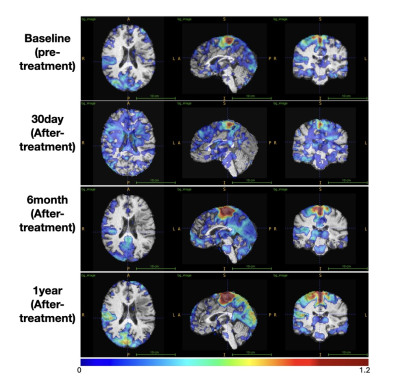 |
Screen Number: 47
1230. Application
of DTI and Resting State fMRI in Clinical Trial of Neural Stem
Cells (NR1) Intracerebral Transplantation for Chronic Ischemic
Stroke
B. Jiang, D. Kim, T. Liang, G. Zaharchuk, M. Zeineh, G.
Steinberg
Stanford University, Stanford, United States
Impact: Monitoring neuroimaging changes may facilitate
patient selection and predict both short- and long-term
responses to cell therapy. Further data collection and
molecular analysis are necessary to deepen our understanding
of brain changes following stem cell therapy.
|
| 08:15 |
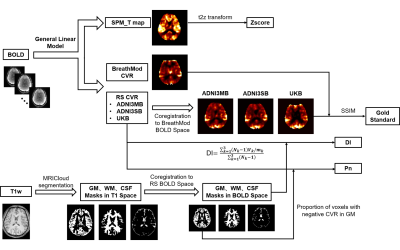 |
Screen Number: 48
1231. Quality
control algorithm for resting-state BOLD based cerebrovascular
reactivity mapping
Y. Wang, P. Liu, H. Lu, D. Wu, Z. Lin
Zhejiang University, Hangzhou, China
Impact: This work proposed an automatic, objective and
quantitative method for quality control of resting-state CVR
mapping.
|
| 08:15 |
 |
Screen Number: 49
1232. Evaluation
of Cerebrovascular Reactivity Damage Using Resting-State BOLD in
Symptomatic Patients with Unilateral MCA/ICA Occlusion
Y. Shan, Y. Yin, B. Cui, B. Xu, J. Lu
Xuanwu Hospital, Capital Medical University, Beijing, China
Impact: This study proposes a new hemodynamic marker
(CVR-AI) for risk stratification in patients with unilateral
intracranial arterial occlusion and promotes the feasibility
of measuring CVR using RS BOLD.
|
| 08:15 |
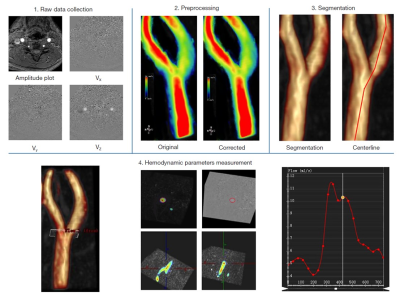 |
Screen Number: 50
1233. Magnetic
resonance angiography for the prediction of carotid
atherosclerotic plaque formation
N. Han, J. Zhang, K. Ai
Lanzhou University Second Hospital, Lanzhou, China
Impact: Ischemic stroke has high incidence, disability
and mortality rate that is often caused by carotid plaques.
Variations in carotid geometry impact local hemodynamics,
influencing atherosclerotic plaque formation. 4D flow MRI
and 3D TOF-MRA provide a non-invasive, quantitative
assessment of these characteristics.
|
The International Society for Magnetic Resonance in Medicine is accredited by the Accreditation Council for Continuing Medical Education to provide continuing medical education for physicians.